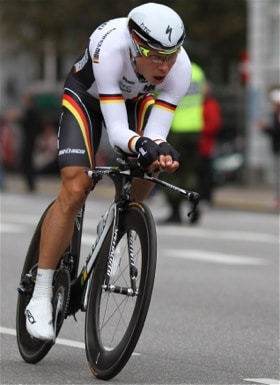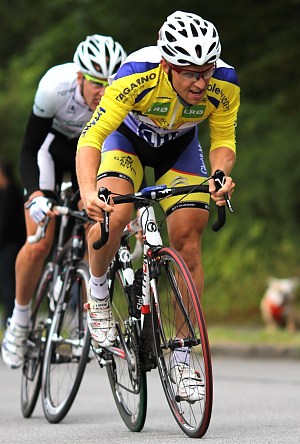An individual time trial is a discipline with requirements for physiology, technique, tactics and psychology. Each of these categories has a potential for optimization that will make you faster. In the first article I will take a closer look on what you can do to optimize your physical performance in time trials.
VO2 max and threshold power are important
It is clear that the most obvious parameter for time trial performance is your physiological status. Maintaining a large percentage of your maximum oxygen consumption over a long period is essential in a time trial. Genes play an important role for your maximum oxygen consumption, so you will benefit from choosing your parents carefully. (If you read this it is probably already to late, sorry”¦)
Interval training can improve your aerobic system
Forget about the genes for a while. You have a great opportunity to optimize your aerobic engine through interval training. These intervals should be focused on workloads that require intensities at maximum oxygen consumption (VO2 max) or just below. Training at this intensity not only boosts your VO2 max, it also improves your performance at lower intensity. That is probably not known by all cyclists, but the physiological adaptations you get from this training is the same as you get from the long ”˜threshold’ intervals. There is nothing magic about training at the threshold, it is not better than training slightly above or below the threshold. The interesting thing is how great a stimulus you put on your oxygen system and how long time you spend on that intensity, because that is what makes you better.
Use time trial power outputs to plan future intervals
Performing a time trial with a mounted power meter or simply making a maximum power output test will give you a picture of what intensity is required in the intervals. Intervals can be performed in many ways and they work wonderful for most riders – especially if they are performed as described in this article. The whole idea of doing intervals is to split up a long ride into shorter sections with high intensity. By doing this, you will be able to get more time at your planned oxygen consumption with less effort.
Use power output to control pace
I normally recommend serious riders to use a power meter for optimization of physical performance. The reason for this is that it is possible to control the workload very precisely, securing me that they train exactly what I am interested in. There are a lot of riders who start out too fast in intervals and then slow down in the last part of the interval. The problem about this is that the first part of the interval requires such a great amount of anaerobic work that they get exhausted too early. They reduce the pace and can’t maintain the power output required to stimulate the aerobic system sufficiently. The result is that the interval subjectively is a very hard experience, but objectively a poor controlled aerobic interval. If they just know how many watts they can maintain over a given period it is much easier for them to control the pace during the interval.


